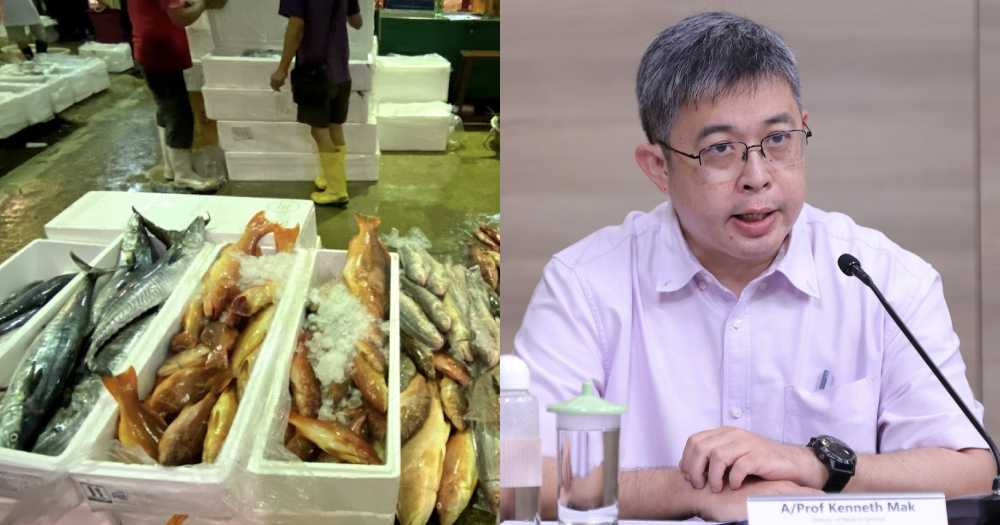Follow us on Telegram for the latest updates: https://t.me/mothershipsg
At least one individual who worked at the Jurong Fishery Port had frequented KTV lounges within that individual's infectious period, MOH's director of medical services Kenneth Mak said on Tuesday, July 20.
He was addressing reporters at a virtual press conference by the multi-ministry taskforce (MTF) and sharing an update about the current clusters.
Unable to verify transmission due to low viral low
However, Mak said that MOH cannot verify if that individual had transmitted an infection.
This is because the diagnostic polymerase chain reaction (PCR) test performed on that individual detected the presence of Covid-19 virus, but it was at "a very low count". The low viral load results in insufficient virus to carry out phylogenetic testing.
Regardless of how transmission has taken place, Mak emphasised that the growing clusters in both KTV lounges and wet markets are a cause for concern.
Possible introduction via sea route
According to Mak, the Delta variant has been identified to be the cause of Covid-19 infections in the clusters associated with the Jurong Fishery Port and Hong Lim Market and Food Centre based on phylogenetic testing of the first group of cases.
The features of the identified variant of concern (VOC) are found to be similar to cases that were picked up in imported cases from Indonesia.
The Ministry of Health (MOH) believes that the Covid-19 infection in this cluster could possibly be introduced via sea route into the fishery port from Indonesian or other fishing boats that have brought fish into the port.
The exact mechanism of transmission from boats to stall operators in the port is not entirely clear, Mak said.
Mak shared that despite the measures in place to ensure operations at the fishery ports remain as contactless as possible, it is very challenging to maintain such safe distancing and SMMs due to the hot and humid environment and nature of activities.
Hence, some mask-off activities and close interactions are likely to take place between people.
Multiple points of introduction of infection
Mak added that the final genetic tests also suggest that clusters linked to the fishery port and wet markets are not due to a single point of introduction of infection.
Exposure may have occurred over a period of time with multiple introduction points of infection.
The genetic information of variants that MOH has identified so far are not completely identical across the different cases.
While they reflect a common parentage, there are subtle differences in the individual test results that indicate "multiple episodes of introduction".
Hence, MOH is unable to determine how long these episodes of introduction have occurred over and if there might have been a "specific super spreader" that led to the larger clusters in the community.
They are also unable to identify a specific case that led to transmission of infection from the boats to the fishery port, and from the port to wet markets across the island, Mak explained.
Top photos by Yitch on Google Maps and Ministry of Communications and Information.
If you like what you read, follow us on Facebook, Instagram, Twitter and Telegram to get the latest updates.

